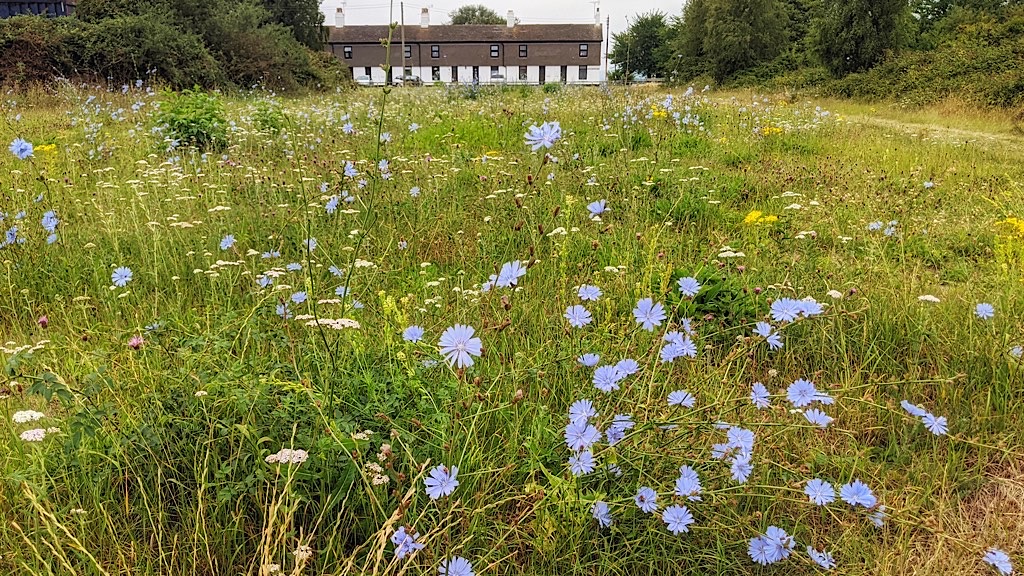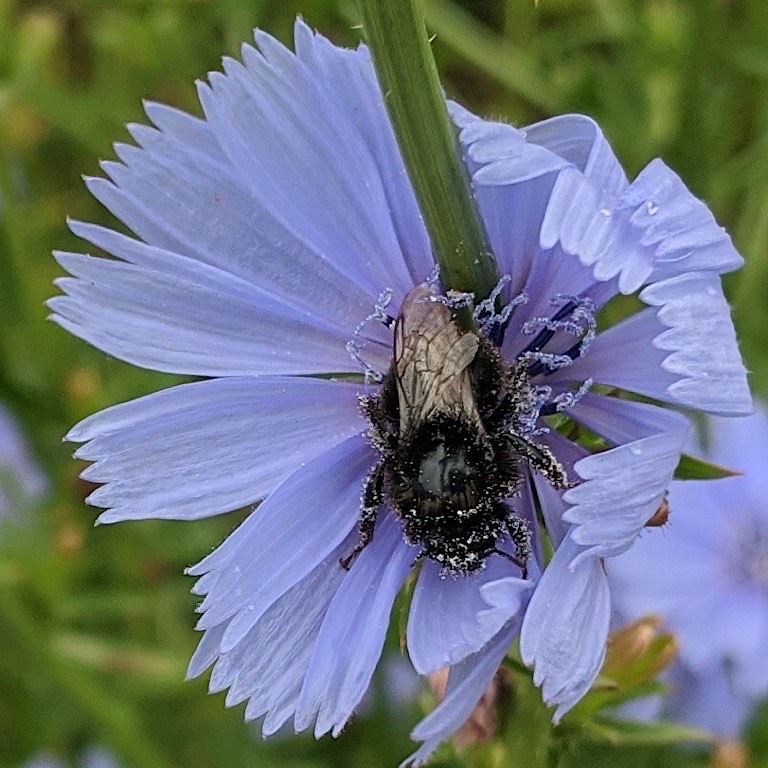
Chic and wild in Berkness – part one

I love wildflowers and there are hundreds of beautiful and intricate species growing in the UK. It is hard to choose favourites since there are so many fab ones.
But two of my most favourite ones – for very different reasons – are currently in full bloom in the Sharpness Docks area.
Both of them are generally seen there throughout July to September and even into October.
However, I never see either of them on my walks around Berkeley which has different soil conditions. As they say, “Habitats, habitats, habitats!”
Dazzling blue chicory
The first plant is Chicory and it is seen flourishing in the wildflower meadow on the brownfield site in the photo above – this is just behind the picnic site on land owned by the Canal & River Trust.
This meadow is not grazed but is cut one or two times a year. It has been cut already this summer, and the late summer chicory is amongst its second wave of wildflowers.
Chicory is one of my top wildflowers due to its gorgeous shade of blue touched with violet. The colour is soft and gentle but vibrant and eye catching at the same time, giving it an air of poetic ambivalence.
The fragile flowers grow along multiple stems: the petals flutter and the stems sway in the plentiful Severn estuary breeze. The whole effect is enchanting.
It’s got some common relatives
Chicory is a close relative of the common dandelion! Like daisies, sunflowers and lettuces, chicory have what are known as ‘super flowers’ – many small flowers or florets make up one large ‘composite’ flower head.
The best time to see Chicory flowers is during a bright morning as they do tend to close up later in the day.
Each flower head does not last long but new flowers form quickly – this shrubby pant can flower continuously for months, including October.
Chicory can also be spotted in some of the east facing verges of the A38 towards Gloucester.
A pollinator magnet
The flowers attract bees and other insects. This bee seemed pretty drunk on nectar and was holding on tight against the gusting wind.
Covered in pollen, it looks like it is doing a very good job of cross pollinating the flowers.
This ‘Common Chicory’ which grows wild looks quite different to the more leafy, cultivated forms such as Radicchio and Endive which are eaten as salad leaves.
However, the common chicory is a very good nectar plant and can be used in the garden to attract many beneficial insects, including hoverflies which eat many garden pests (or their larvae eat them).
What’s in a name?
Given my ongoing struggle to remember and spell plants’ scientific names, I usually stick to the common names – I enjoy their folky aspect anyway.
But to quickly dip toes in the Roman spa water and dabble in some Latin, both dandelions and chicory are part of the Cichorieae tribe within the Asteraccae family. The genus name for Chicory is Cichorium.
In recent years, there has confusingly been a massive reorganisation of the so called Aster family. Chicory are not asters, but even asters aren’t asters anymore! Back to common names…
If I were a paint manufacturer, I would market this colour for relaxing bedrooms or bathrooms and call it – no prizes for guessing – Chicory Blue!
Want to know more?
A day in the life of a Chicory flower:




